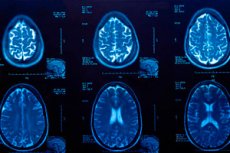New publications
Researchers recommend infant brain scans to reduce stroke risk
Last reviewed: 02.07.2025

All iLive content is medically reviewed or fact checked to ensure as much factual accuracy as possible.
We have strict sourcing guidelines and only link to reputable media sites, academic research institutions and, whenever possible, medically peer reviewed studies. Note that the numbers in parentheses ([1], [2], etc.) are clickable links to these studies.
If you feel that any of our content is inaccurate, out-of-date, or otherwise questionable, please select it and press Ctrl + Enter.

Non-invasive brain scans for children under one year old could identify risk factors and reduce the chance of stroke later in life, according to researchers from the University of South Australia.
In a groundbreaking study, scientists have found that despite improvements in medicine, patterns of brain aneurysms remain stable over time, meaning variations in brain vessels can be easily detected early in life.
Published in BMJ Open, the study analysed 260 years of data to systematically assess long-term trends in brain aneurysms, which can cause stroke.
Globally, stroke is the second leading cause of death. Every year, 15 million people worldwide suffer a stroke. Of these, 5 million die and another 5 million are left permanently disabled, placing a significant burden on families, communities and economies.
In Australia, statistics show that stroke kills more women than breast cancer and more men than prostate cancer. Among the Australian population, a stroke occurs every 19 minutes.
More than 80% of strokes are preventable. With the estimated cost of a single stroke being around $300,000 in Australia, identifying early warning signs is not only key to prevention, but can also save millions.
Lead researcher and neuroanatomy expert Dr Arjun Burlakoti, senior lecturer in anatomy and neuroanatomy at UniSA, says identifying variations in brain vessels in children could prevent strokes later in life.
"A cerebral, or brain, aneurysm is a bulging of an artery into the brain. It is caused by a weakness in the artery wall. If a cerebral aneurysm ruptures, it can cause a stroke," says Dr. Burlakoti.
"Cerebral aneurysms can develop at any age. Although the most common age for diagnosis is between 31 and 60 years, the incidence of cerebral aneurysms in children is almost equivalent to that in adults. The incidence of childhood aneurysms may be comparable to that in adults because childhood is a much shorter lifespan than adulthood.
"Our study shows that aneurysms form and rupture for their own intrinsic reasons, and that any variations in brain vessels are likely to be present from birth.
"This means that if we can identify variations in the brain's arterial network in childhood, we can more actively monitor and test at-risk individuals throughout their lives."
Researchers recommend using noninvasive transcranial Doppler ultrasound to scan infants and children for variations in brain vessels. This painless test uses sound waves to study blood flow in and around the brain and detect variations in blood vessels.
They argue that the screening method could allow for timely intervention and potentially prevent aneurysms and stroke-related complications.
"Screening for arterial component variations in children, especially under 2 years of age, may be a practical tool for identifying cerebral artery variations," says Dr. Burlakoti.
"This is a safe, non-invasive screening test that provides families with a pathway for regular monitoring if any variations are detected.
"If you can reduce your risk with a simple screening test, why not do it?"
